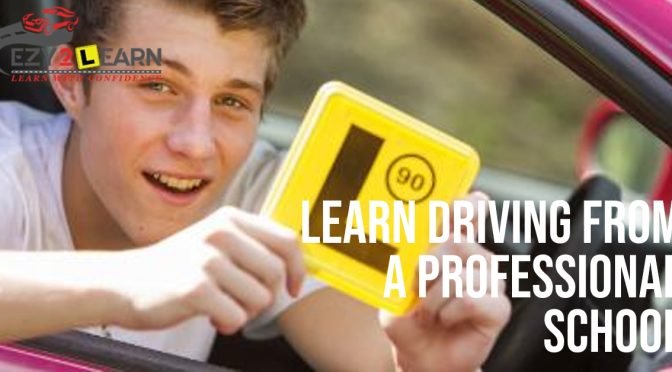Learning to drive a manual car can be an exciting yet challenging experience, especially if you’re new to the process. If you’re planning to learn manual driving in Sydney, it’s essential to know that mastering this skill involves practice, patience, and awareness of common mistakes. Understanding and avoiding these errors can significantly enhance your learning experience and make you a safer, more confident driver. In this detailed guide, we’ll explore the ten most common mistakes made by beginners in manual driving and how to avoid them.
1. Introduction
Learning manual driving can be both rewarding and practical, particularly in a city like Sydney where many drivers still prefer the control offered by a manual transmission. However, with manual driving, there’s a steep learning curve. While automatic cars are becoming more popular, many people still choose to learn manual driving in Sydney due to the level of control and efficiency manuals offer. When driving a manual car, you’re more engaged with the vehicle, which requires learning additional skills like clutch control, gear shifting, and more.
In this article, we’ll dive into 10 common mistakes that new manual drivers often make and provide practical tips on how to avoid them. Whether you’re preparing for your driving test or simply wanting to improve your manual driving skills, this guide will help you navigate the complexities of manual transmission driving.
2. The Basics of Manual Driving
Before diving into the common mistakes, let’s quickly recap the basics of manual driving. When driving a manual car, you control the gear changes by using a clutch pedal and gear stick. The clutch pedal disengages the engine from the wheels, allowing you to change gears smoothly. This means more coordination and skill are required compared to driving an automatic car.
To learn manual driving in Sydney, you’ll need to become comfortable with these basics:
- Clutch control: Mastering the timing and pressure applied to the clutch.
- Gear shifting: Knowing when to upshift and downshift based on engine speed and road conditions.
- Handbrake usage: Understanding when and how to apply the handbrake, particularly on slopes or in tight parking situations.
Now that we have a refresher on the fundamentals, let’s move on to the common mistakes you should avoid.
3. Incorrect Clutch Control
One of the first challenges you’ll face when learning manual driving in Sydney is clutch control. Beginners often struggle to find the “biting point,” which is where the clutch and engine meet to move the car forward smoothly.
Common Mistake: Holding the clutch too long or releasing it too quickly.
How to Avoid It: Practice finding the biting point in a safe, controlled environment. Slowly release the clutch while gently applying gas. Over time, you’ll build muscle memory, making the process smoother. Pay attention to the sound of the engine and feel of the car, as they provide cues on how to handle the clutch.
4. Riding the Clutch
Riding the clutch is a bad habit that many manual drivers develop over time, and it can lead to significant wear and tear on the car’s clutch system.
Common Mistake: Keeping your foot partially on the clutch pedal while driving.
How to Avoid It: Make sure your left foot is either fully pressing the clutch when changing gears or completely off it when you’re not. Get into the habit of resting your foot on the car’s floor when the clutch is not in use. This can help extend the life of your vehicle’s clutch system.
5. Shifting Gears Incorrectly
Knowing when and how to shift gears is crucial to driving a manual car. Shifting too early or too late can stall the car or cause unnecessary strain on the engine.
Common Mistake: Shifting gears at the wrong time or forcing the gearstick into gear.
How to Avoid It: Listen to the engine’s RPM (revolutions per minute) and shift gears accordingly. If the engine is revving too high, it’s time to upshift; if the engine sounds like it’s struggling, downshift. Always use a smooth motion when changing gears, and never force the gearstick if it feels stuck.
6. Forgetting to Use the Handbrake
When driving in a hilly city like Sydney, learning how to use the handbrake effectively is essential, especially when parking or stopping on an incline.
Common Mistake: Relying solely on the footbrake and not using the handbrake when stopping on hills.
How to Avoid It: Practice using the handbrake when parking or during hill starts. This ensures your car remains stationary, preventing it from rolling backward. Using the handbrake properly also takes the pressure off your footbrake and helps avoid clutch wear.
7. Resting Hand on the Gear Stick
This is a common mistake even experienced manual drivers make. While it may seem harmless, resting your hand on the gear stick while driving can cause long-term damage to your transmission.
Common Mistake: Keeping your hand on the gear stick instead of the steering wheel.
How to Avoid It: Always keep both hands on the steering wheel unless you’re actively shifting gears. This not only ensures you’re ready to react quickly in any situation, but it also prevents unnecessary pressure on the gear stick and transmission components.
8. Revving the Engine Excessively
Many beginner manual drivers tend to rev the engine too much, especially when trying to move the car from a standstill. This not only wastes fuel but can also damage the engine over time.
Common Mistake: Over-revving the engine, especially during gear changes or when pulling away.
How to Avoid It: Use gentle, controlled acceleration. As you learn manual driving in Sydney, you’ll develop a better feel for the car and know how much gas to apply during different driving situations. Excessive revving often occurs due to nervousness, so staying calm and practicing is key.
9. Failing to Match Rev Speed to Gear Changes
Rev-matching is the technique of adjusting the engine’s RPM to the correct speed before shifting gears. This is particularly important when downshifting.
Common Mistake: Not matching the engine revs when downshifting, leading to a jerky ride.
How to Avoid It: Practice synchronizing the engine’s speed with the appropriate gear. For example, when downshifting, you need to apply a little gas to increase the revs before releasing the clutch. This ensures a smoother transition between gears and prevents jerking or stalling.
10. Poor Steering Technique
Many learners focus so much on shifting gears that they forget about their steering technique, which can result in poor control of the vehicle.
Common Mistake: Holding the steering wheel incorrectly or not making smooth turns.
How to Avoid It: Maintain a firm but relaxed grip on the steering wheel at the 10 and 2 o’clock positions. Practice smooth, controlled steering movements, especially when taking turns or navigating tight corners. Proper steering technique is essential for overall car control and safety.
11. Not Using Mirrors Effectively
While learning manual driving in Sydney, it’s easy to become overly focused on gear changes and forget to check your mirrors regularly. This habit can lead to dangerous driving situations, particularly in heavy traffic.
Common Mistake: Failing to check mirrors frequently enough.
How to Avoid It: Develop the habit of scanning your mirrors frequently, especially before changing lanes, turning, or stopping. A quick glance can give you valuable information about the cars around you and help prevent accidents.
12. Panic in Traffic Situations
Sydney’s traffic can be challenging, and it’s common for beginners to panic, especially when they’re struggling with gear shifts or handling stop-and-go traffic.
Common Mistake: Panicking during stressful driving situations, which leads to poor decision-making.
How to Avoid It: Stay calm and composed, especially in high-pressure situations. If you stall or make a mistake, take a deep breath, restart the car, and move on. The more you practice, the more confident you’ll become in handling difficult traffic conditions.
13. Conclusion
Learning to drive a manual car in Sydney can seem daunting at first, but by understanding and avoiding these common mistakes, you can quickly build your confidence and skill level. From mastering clutch control to improving your gear-shifting technique, every aspect of manual driving requires practice and attention. As you progress, you’ll find that driving a manual car offers a sense of control and engagement that automatics can’t match.
Remember, the key to success is practice. With time and experience, you’ll be able to navigate Sydney’s roads with ease and confidence.
FAQs about Learning Manual Driving in Sydney
Q1: Is learning manual driving harder than automatic?
Yes, manual driving is generally more challenging because you need to master clutch control and gear shifts, but many drivers find it more rewarding in the long run.
Q2: How long does it take to learn manual driving?
It varies, but most people need around 20 to 30 hours of practice to feel comfortable driving a manual car.
Q3: Can I learn manual driving in Sydney if I already drive an automatic?
Absolutely! Learning manual after driving an automatic is possible, and many people transition between the two with some practice.
Q4: Are there manual driving schools in Sydney?
Yes, there are several driving schools in Sydney that specialize in manual driving lessons.
Q5: What should I focus on when learning manual driving in Sydney?
Focus on clutch control, smooth gear shifts, and situational awareness, especially in Sydney’s busy traffic conditions.
By avoiding these common mistakes and practicing regularly, you’ll soon become proficient in manual driving in Sydney.
 0405 477 217
0405 477 217




 Enquire Now
Enquire Now

